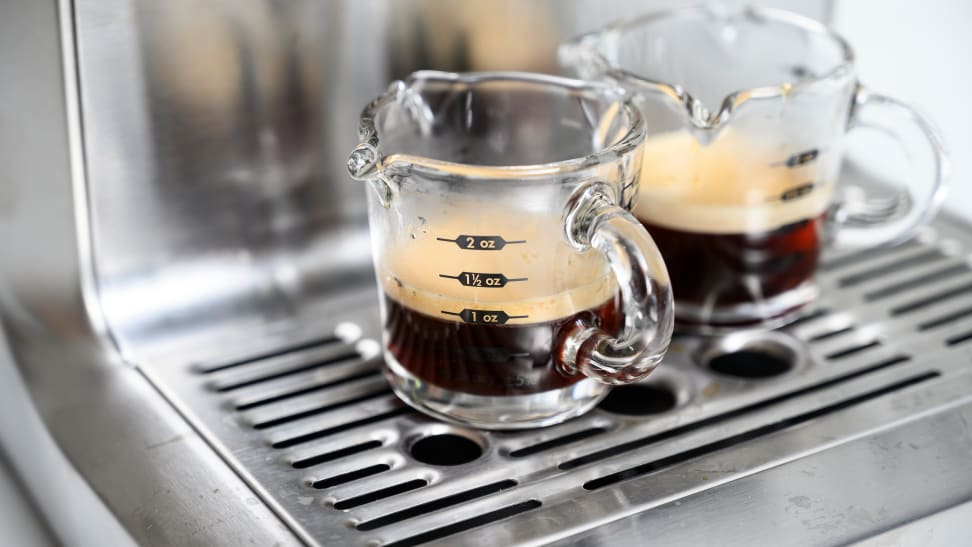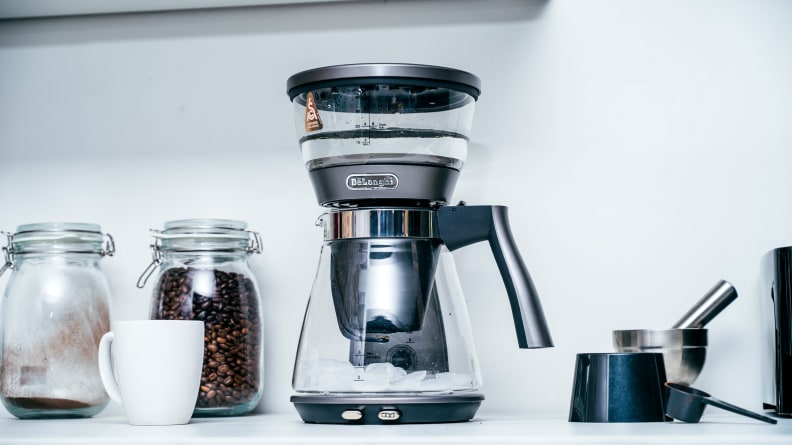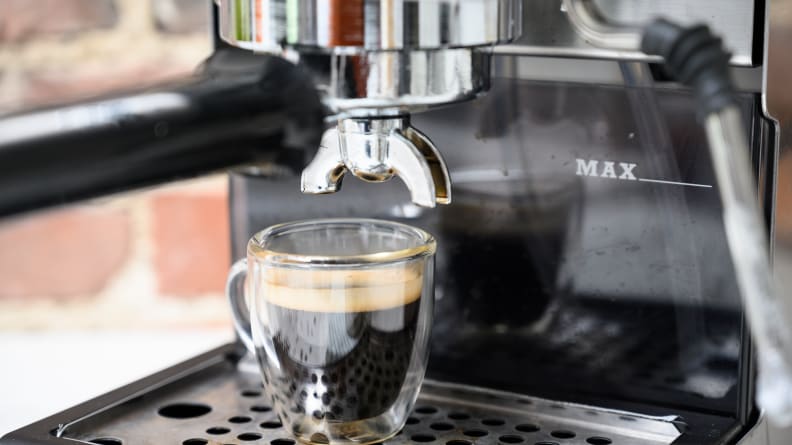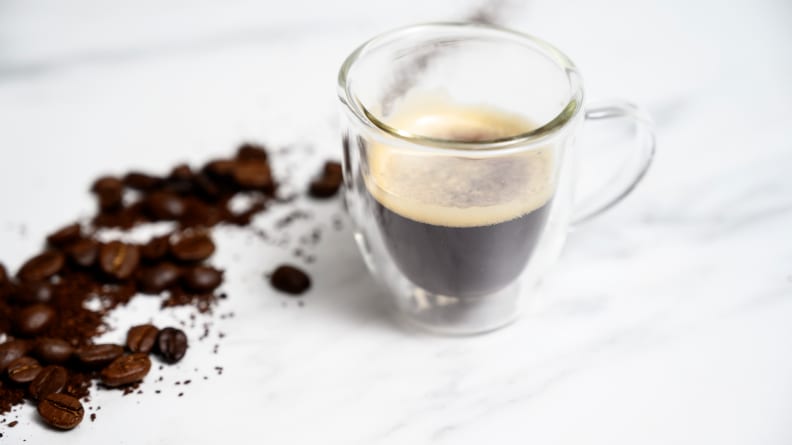What's the difference between espresso and drip coffee?
Here’s everything you need to know about espresso.
 Credit:
Reviewed / Betsey Goldwasser
Credit:
Reviewed / Betsey Goldwasser
Products are chosen independently by our editors. Purchases made through our links may earn us a commission.
If you’re suddenly making coffee at home every day, you may wonder why adding milk foam to black coffee won’t produce the same flavor or texture as the lattes and cappuccinos you used to get from coffee shops. The answer lies in the key differences between espresso and drip coffee.
It’s all about extraction

If you make coffee at home, you're probably most familiar with drip coffee makers.
First, coffee and espresso differ in their methods of extraction. While drip coffee relies on soaking coffee grounds in boiling water to let the liquid drip through, espresso requires forcing hot water through finely ground coffee at high pressure, which involves more variables and can be a little more complicated. However, getting a hang of a seemingly delicate espresso machine, like our favorite from Breville, has a rewarding outcome—you’ll be able to make consistently tasty coffee drinks like a professional barista.
Aside from the extraction method, recommended roast types and grind sizes can be different for the two types of coffee preparation. For drip coffee (pour-over, French press, and automated coffee makers all fall into this category), users can choose from a wide variety of roasts—blonde for the fruity or floral flavors and dark for the nutty flavors—and coarse to medium grind sizes depending on the exact brewing method.
For espresso, medium and dark roasts are preferred because they offer the most nuanced espresso taste. In terms of grind size, espresso strictly requires fine to superfine grounds for a thorough extraction, as the grinds are only in contact with water for a short time.
Espresso isn’t only for coffee shops

Unlike espresso machines at coffee shops, most home espresso machines are compact.
Interested in making espresso at home? The process can be done with a manual espresso maker, a moka pot, or an espresso machine—all three ways can make equally tasty, flavorful espresso if done correctly. However, for coffee enthusiasts who want to brew espresso with the most nuanced flavors quickly and design latte art, espresso machines are the best choice.
In our tests, we’ve found the ones with built-in grinders to be the most user-friendly and economical for beginners, and one highly-rated espresso machine from DeLonghi even comes with a built-in tamper, which makes the brewing process mess-free.
Throughout much of Europe, people generally get espresso from coffee shops or make it at home using a moka pot. For those who aren’t familiar with them, these portable, lightweight gadgets work like percolators but brew smaller cups of espresso. In addition to stovetop espresso making, moka pots are perfect for camping trips. Manual espresso makers are generally good for espresso extracting, but the machine itself is expensive to maintain so its popularity has decreased over the years.
If none of these options seem like a good fit, but you still need your caffeine fix while shops are closed, a pod espresso maker can help—these machines require zero assembly and you can start brewing right out of the box.

With the right tools, everyone can pull espresso shots like a barista.
Looking for more coffee content? From finding the right gadgets to teaching you how to make iced coffee without diluting the strength, we’re here to help ensure your best brewing experience.


